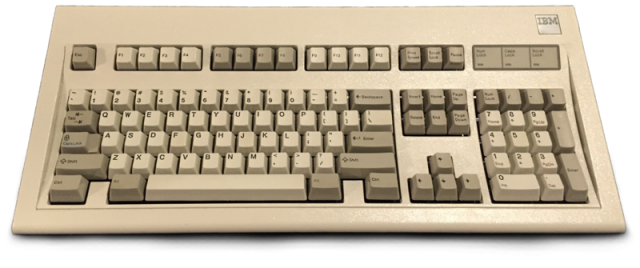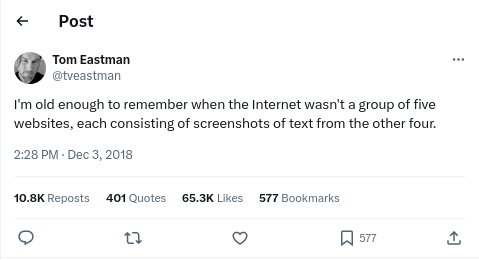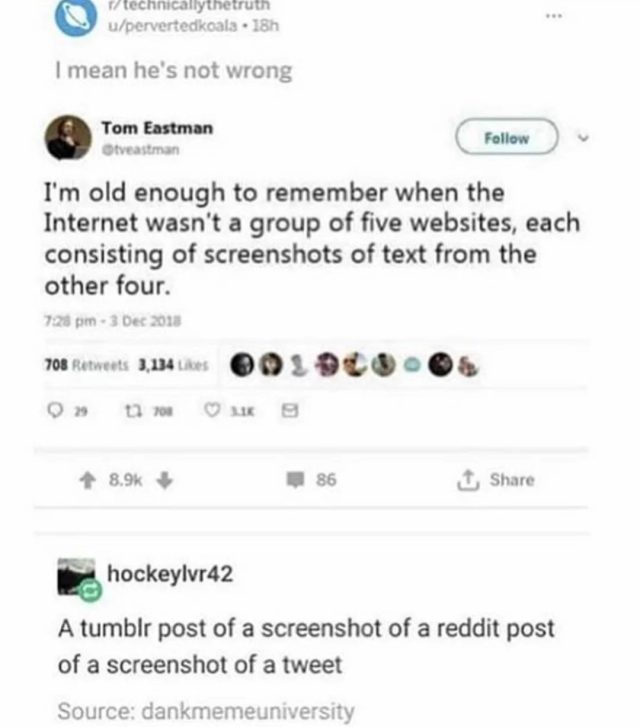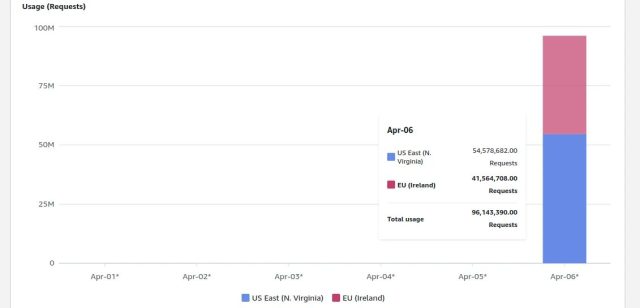“I’m old enough to remember when the Internet wasn’t a group of five websites, each consisting of screenshots of text from the other four.”
Category: Linkblog
How an empty S3 bucket can make your AWS bill explode
“Maciej Pocwierz accidentally created an S3 bucket with a name that was already used as a placeholder value in a widely used piece of software.
They saw 100 million PUT requests to their new bucket in a single day, racking up a big bill since AWS charges $5/million PUTs.
It turns out AWS charge that same amount for PUTs that result in a 403 authentication error, a policy that extends even to “requester pays” buckets!
So, if you know someone’s S3 bucket name you can DDoS their AWS bill just by flooding them with meaningless unauthenticated PUT requests.
AWS support refunded Maciej’s bill as an exception here, but I’d like to see them reconsider this broken policy entirely.”
| #AWS #S3bucket #Cloud
“Back in 2019, working on WordPress, I started finding myself, almost weekly, arguing against people who wanted to take the product we were working at and made it worse if that mean they could squeeze 0.1% more revenue from it.
The 0.1% figure is not even a random number: I remember this speciffic A/B test on WordPress.com that was declared a success and shipped to 100% of the users because it increased the free-to-paid conversion by 0.1%.
Soon after it was released, I found out that as a side effect, it increased the churn of free users by 20 something %, so I called for an urgent rollback and removal of the change.
So I was promptly explained that we didn’t care about free-users churn, because finance had calculated the average long-term value of the free users to be something like $2 per year, and the increase in conversion was bigger than what we could get from them.
[…] by the end of 2020, the CEO quietly told me to follow the growth team plans and shut up or step down.”
– @Javi | Goblin.Band
“oh, WordPress.com development is mostly open source, so if I’m too speciffic, anyone could go to github and find the single PR where that change was shipped, etc.
I don’t want to put anyone under the spotlight, specially engineers who were just doing what they were told to do.
Also, it’s just one example of many, the only thing interesting about that particular example is that I complained about it and I got told about the ‘free user value’ calculation.
But well, on broad strokes, it was about making it harder to tell which features were paid and which ones were free during onboarding.
So a lot of people who wanted to create an account to host a free blog, found themselves being redirected to the shopping cart and asked to pay for things they have selected thinking they were free.”
– @Javi | Goblin.Band
| #Wordpress #OpenSource
Why I Still Use a 34-Year-Old IBM Model M Keyboard – Benj Edwards

“The 1981 IBM PC came with an 83-key keyboard (commonly known as the “Model F”).
Reviewers generally admired it, but some criticized elements of its layout and a few awkward key shapes.
Otherwise, it was a beast of a unit—heavy and durable, with a buckling spring keyswitch design that gave it an industrial feel.
Years ago, I had an email conversation with IBM veteran David Bradley, who worked on the original IBM PC.
He told me that between 1983-1984, IBM assembled a 10-person task force to address the criticisms of the original keyboard, so they could produce a much better replacement.
They considered usability studies, ergonomics, and consumer feedback.
They also looked at popular designs from competitors, like the DEC LK201, a terminal keyboard that popularized the inverted-T arrow key layout.
The result was the 101-key IBM Enhanced Keyboard.
It was first released for a terminal in 1985, and for PC XT and AT machines in 1986.
When most people reference “Model M,” they’re usually talking about this keyboard, although it technically refers to a family of products with similar characteristics.
The Model M was innovative because it separated its layout into four distinct areas: typing, numeric pad, cursor/screen control, and function keys.
It added Alt and Ctrl keys on both sides and two additional Fn keys.
Several keys also had increased strike areas, and the Esc key (the “Back/Quit” button in those days) was more isolated to prevent people from accidentally hitting it.
The IBM Enhanced Keyboard was also more cost-effective than the earlier Model F.
Many metal parts were replaced with plastic, and a membrane sheet beneath the buckling springs replaced capacitive switches.
That doesn’t mean these savings were passed on to the consumer, however.
In 1986, the IBM Enhanced Keyboard cost $295, which is the equivalent of about $695 today.
That’s some serious dough—but you did get a serious keyboard.”
https://www.howtogeek.com/661430/why-i-still-use-a-34-year-old-ibm-model-m-keyboard/
“When did we forget that the primary function of a keyboard is not a fashion-accessory for the office desk– but a tool to transform thoughts and mechanical effort into electrical data signals for a computer.
For the very few that still appreciate the tactile feel of a typewriter-based computer keyboard and can still appreciate the simplicity of black letters on white keys, one can still seek out and own an original IBM model M keyboard — a little piece of early computing history.
There is the expectation for the master craftsman to invest in quality precision tools and instruments to transform work and raw materials into finely crafted goods.
We believe that the modern, computer professional should have similar quality keyboards to turn his or her thoughts into computer code.”
| #Keyboard #IBM #PS/2 #ModelM
General reality of the ECONOMICS of the Book Publishing market…
“…The long and short of it is publishing is very much a gambler’s game,…”
https://countercraft.substack.com/p/no-most-books-dont-sell-only-a-dozen/comment/8883524
| #Books #Publishing #Economics
linkblog category test
test from page
#test
Send text from email
AT&T: number@txt.att.net
T-Mobile: number@tmomail.net
Verizon: number@vtext.com
Sprint: number@messaging.sprintpcs.com or number@pm.sprint.com
Virgin Mobile: number@vmobl.com
Tracfone: number@mmst5.tracfone.com
Metro PCS: number@mymetropcs.com
Boost Mobile: number@myboostmobile.com
Cricket: number@sms.mycricket.com
Nextel: number@messaging.nextel.com
Alltel: number@message.alltel.com
Ptel: number@ptel.com
Suncom: number@tms.suncom.com
Qwest: number@qwestmp.com
U.S. Cellular: number@email.uscc.net
via Bo Tian
Creative Experience – circular response
I never react to you but to you-plus-me; or to be more accurate, it is I-plus-you reacting to you-plus-me.
”I” can never influence ”you” because you have already influenced me; that is, in the very process of meeting, by the very process of meeting, we both become something different.
It begins even before we meet, in the anticipation of meeting…
Every movement we make is made up of a thousand reflex arcs and the organization of those arcs began before our birth.
If the price of giving everyone internet access is total domination by Facebook, it’s not worth it
John Naughton in The Guardian:
Some years ago, I had a conversation with a senior minister in which he revealed that he thought the web was the internet.
While I was still reeling from the shock of finding a powerful figure labouring under such a staggering misconception, I ran into Sir Tim Berners-Lee at a Royal Society symposium.
Over coffee, I told him about my conversation with the minister.
“It’s actually much worse than that,” he said, ruefully.
“Hundreds of millions of people now think that Facebook is the internet.”



